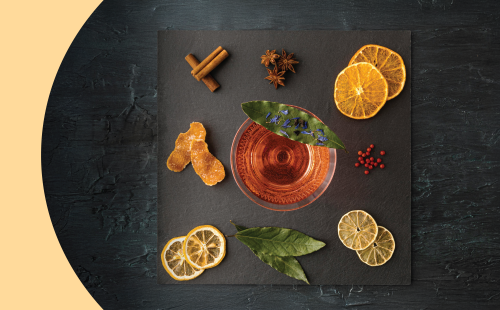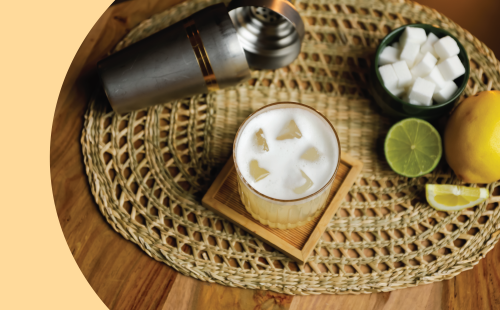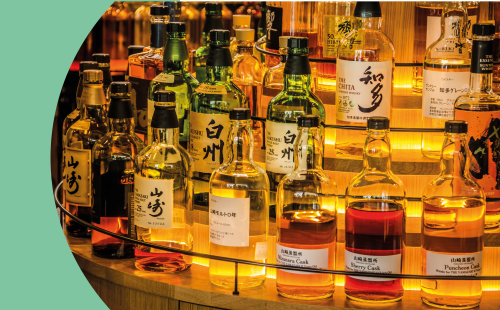There’s something so satisfying about creating your own liqueurs. I turn to homemade liqueurs when I can’t find the flavor or feel like putting a unique twist on a classic. With just a base spirit, a bit of sweetener, and whatever flavors I’m craving, I can make a liqueur that’s totally my own and perfect for customizing cocktails. Plus, it’s surprisingly easy and incredibly rewarding to taste that first sip!
What Are Liqueurs?
Liqueurs are spirits that have been flavored and sweetened, typically using a neutral grain spirit (a bit like vodka). They’re infused with ingredients such as fruits, herbs, spices, or flowers, and then sweetened to taste. The result is a smooth, flavorful spirit perfect for cocktails or sipping on its own.

How to Make Liqueurs at Home: Step-by-Step
1. Gather Your Ingredients
To start, you’ll need the following ingredients:
- Base Spirit: Vodka is ideal for its neutrality, but you can also use rum, gin, or any spirit you prefer. If available in your country, you can use high-proof alcohol (up to 70%-90% or 140-180 proof), but in that case, keep in mind that you will have to dilute it with water before consuming.
- Sweetener: Granulated sugar works best, but you can also experiment with honey, agave nectar, or a combination of sweeteners.
- Flavoring Ingredients: Here, you can get creative. Some options include dried fruits, cocoa beans, herbs, vanilla pods, tea, flowers, or spices. For example, cocoa beans and vanilla pods make a fantastic chocolate liqueur.
2. Cold-Infuse Your Flavors
Cold infusion is the best method for making liqueurs at home, as it allows the flavors to slowly blend without heating, which could cause the alcohol to evaporate.
- Prepare Ingredients:
- Toast spices briefly to release their natural oils and gently crush them using a mortar.
- Wash fresh herbs thoroughly.
- Wash fresh fruits and chop them coarsely.
- Mix Ingredients: Combine your chosen flavoring ingredients with the base spirit in an airtight glass container. For example, for a coffee liqueur, mix vodka or any other high-proof alcohol with coffee beans; for a cocoa liqueur, add cocoa beans and a vanilla pod to vodka. Feel free to create your own mixes: why not make a cacao, coffee, vanilla and cinnamon liqueur for example? Here is the part where you can really get creative!
- Infuse in a Cool, Dark Place:
Store the container in a cool, dark place away from heat and sunlight. Cold infusion can take a few days to weeks, so patience is key.

3. How Long Does It Take?
The infusion time depends on the ingredients and the strength of flavor you want:
- Initial Taste: After 3 days, taste the infusion. If it’s flavorful enough, you can move on to the next step. If not, reseal the container, stir gently, and allow it to infuse longer.
- General Timeline: A week of infusion is usually a good starting point, but for richer flavors, you may let it sit for 1–2 months. As long as the ingredients are covered with alcohol, they won’t spoil or grow mold, so don’t worry about leaving them even
- Different times for different ingredients: If making a liqueur that involves several ingredients, it can be smart not to add them all at the same time. You can first infuse the main ingredient, and then a week later add a second flavoring agent: for example, you can start by infusing cacao beans (which take a while to properly infuse) for a month, and then add a few sprigs of fresh mint for the last week of infusion. This way, you’ll get a cocoa & mint liqueur where the mint notes remain fresh and subtle. Trial and error is the way to figure out what works best for each specific ingredient!
4. Strain the Infusion
Once your infusion has reached the desired flavor strength, strain it. Use a fine-mesh strainer or cheesecloth to remove any solids, ensuring a smooth liqueur.
5. Sweeten the Liqueur
Once you’re happy with the flavor, it’s time to add sweetness:
- Add Sugar: Start with about 100g of sugar per liter of liqueur, stirring or shaking the mixture until the sugar is fully dissolved. Taste and add more sugar if needed—don’t be afraid to go sweeter, as some liqueurs are meant to be rich and sweet. Some commercially available liqueur, like crème de cassis, contain at least 400g of sugar per liter!
- Alternative Sweeteners: If you prefer, try using honey, agave syrup, or a combination of granulated sugar and another sweetener to add more depth to your liqueur.
6. Bottle and Store
Once sweetened, pour your homemade liqueur into a glass bottle for storage. Keep the bottle away from direct sunlight and in a stable temperature environment to preserve the flavors. Remember to always label your bottles straight away (with the date of production and content), and take note of your recipe as you go as well!

Recipe Inspirations
Here are a few ideas to inspire your homemade liqueur journey:
- Cocoa Liqueur: Infuse vodka with cocoa beans and a vanilla pod for a rich chocolate flavor.
- Coffee Liqueur: Use coffee beans or freshly brewed espresso for a bold, aromatic coffee liqueur.
- Dried Apricot and Orange Blossom Liqueur: Add a blend of roughly chopped dried apricots and orange blossom water for a fruity, floral liqueur.
- Pumpkin Spice Liqueur: Mix vodka with pumpkin spice for a cozy, spiced liqueur perfect for autumn cocktails.
Final Tips for Perfect Homemade Liqueurs
Experimenting with flavors is one of the most enjoyable parts of making homemade liqueurs. Don’t hesitate to try new ingredients—consider floral teas, like hibiscus or jasmine, or even herbal infusions such as chamomile or lavender. Each brings a unique twist to your liqueur, and the possibilities are truly endless.
Patience is key in crafting a great liqueur. The longer you allow your mixture to infuse, the deeper and more complex the flavor becomes. Resist the urge to rush this process; a slow infusion will reward you with a richer and more satisfying taste.
Finally, before bottling, always give your liqueur a taste test. This ensures that the balance of flavors and sweetness is exactly what you want. Adjust if necessary, whether adding a sweetener or letting the mixture infuse just a bit longer.





